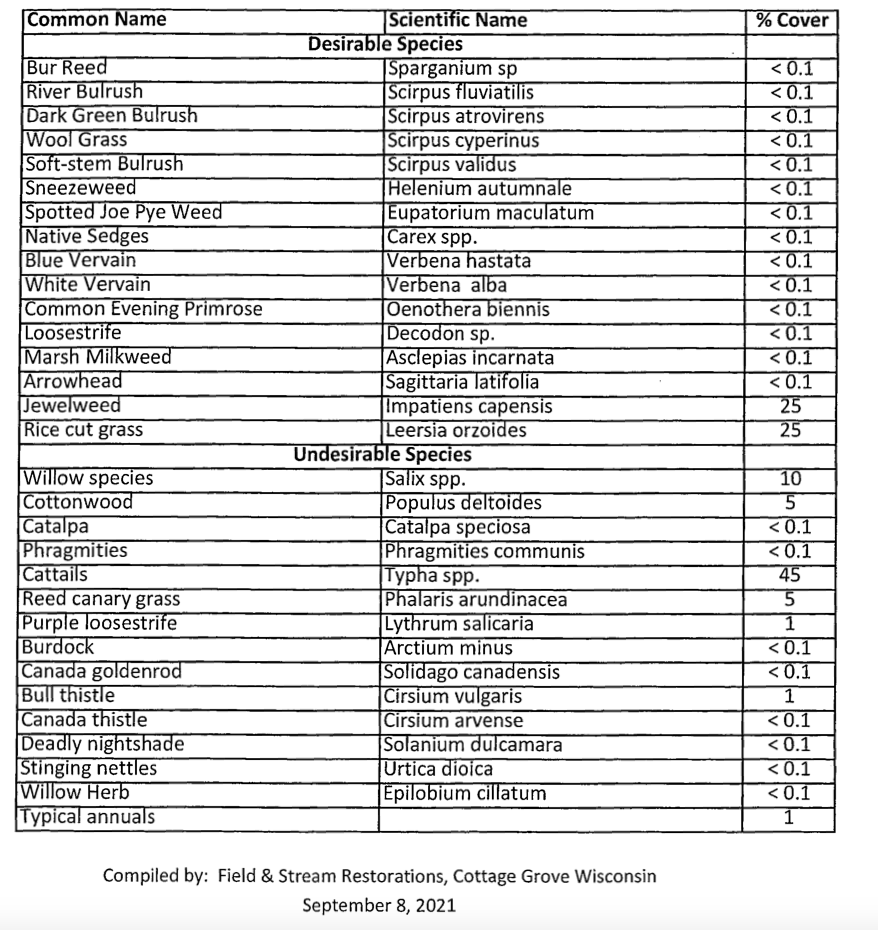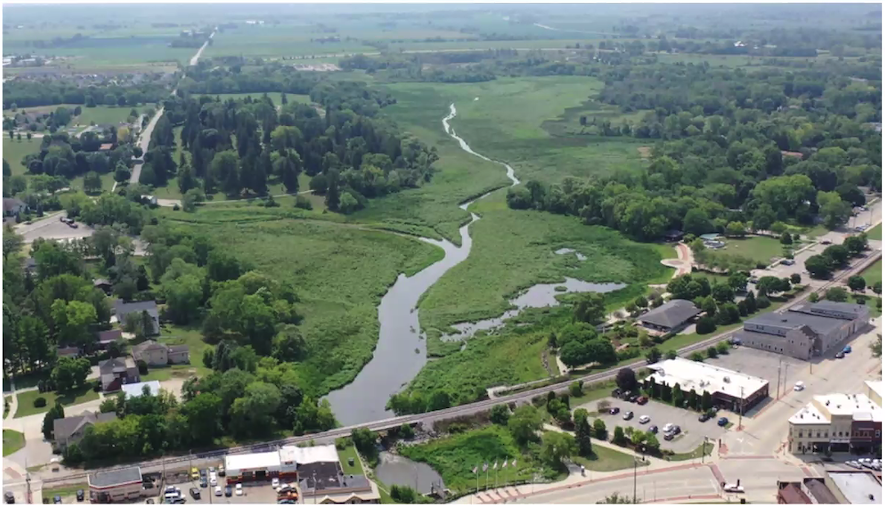By Kim McDarison
A public meeting to discuss plans underway to apply herbicides to over 100 acres of drawn down lakebed in Whitewater has been scheduled for Wednesday, Oct. 6, at 3:30 p.m.
The virtual meeting will be held using the “GoToMeeting” platform.
A link to join the meeting in here:
https://global.gotomeeting.com/join/469475541.
The full meeting notice placed recently on the City of Whitewater’s website is here: https://whitewater-wi.gov/AgendaCenter/ViewFile/Agenda/_10062021-1414?packet=true.
Among documents shared recently on the city’s website is a letter, dated Sept. 28, written to landowners around Trippe and Cravath lakes, which states that some 100 acres of lakebed will be treated sometime during mid to late October.
Through the letter, property owners were informed of the following: “The area to be treated near your property will be selectively treated to help reduce a nuisance population and help restore native aquatic plant populations in Cravath and Trippe Lakes. The day treatment is to take place a bright yellow sign will be placed along each shoreline within 200 feet of any of the affected treatment areas.”
A list of undesirable and desirable plant species, compiled by Cottage Grove-based Field & Stream Restoration, the contractor hired by the city to apply the herbicide, and dated Sept. 8, was also shared on the city’s website.
According to information shared on Sept. 8 with the city by Field & Stream Restoration, LLC, a “Lake Spraying Plan” calls for plants designated within a map, which also recently has been shared on the city’s website, of the lakebed to be sprayed, but “limited to not greater than 10 plants in any one contiguous area.”
The plan, which is presented in an outline form, makes note of such variable as “map creeks, seeps, and other wet areas,” and offers some types of criteria, enumerated as: “determine sprayer mixing/refilling locations,” including “level, legal, approved, access to the lakebed,” “mixing pads (containment and absorbent),” and “source of water, municipal garage quick fill.”
The outline further notes that the plan will engage “small scale spraying,” enumerating such elements as narrow strips, around obstacles such as bridges, rock work, and docks.
Spraying will take place “adjacent to flowing water,” and will be done using “backpack and ATV sprayer guns,” the outline notes.
During spraying, the plans calls for sidewalks, trails and other public access points to be “closed off,” and for the installation of “field signs.”
Under the heading of “Large Scale Spraying” the plan notes activity will occur in areas that are “30 feet or greater from shore,” and will use a UTV (utility task vehicles also called a side-by-side recreational off-road vehicle) with a “boom-less sprayer.”
The document further identifies “spray bands,” noting that a band of 0-50 feet from shore will be treated with aquatic approved triclopyr and aquatic approved glyphosate, and a band of 50 feet plus will be treated with aquatic approved triclopyr and aquatic approved imazapyr.
Documents submitted to the Wisconsin Department of Natural Resources identify the chemical that will be used as “Roundup Custom for Aquatic & Terrestrial Use.”
According to published information, the “main active ingredient” in Roundup is isopropylamine salt of glyphosate.
An earlier story, noting the city’s plans to apply herbicide in the lake beds, is here: https://fortatkinsononline.com/cravath-trippe-lakes-herbicide-application-anticipated-in-mid-october-public-meeting-to-be-scheduled/.
An earlier story, outlining overall plans for lake restoration at Cravath and Trippe lakes, is here: https://fortatkinsononline.com/cravath-trippe-lakes-restoration-plans-on-schedule-city-manager-says/.
A link to the city’s website, which also includes documents submitted by the city to the DNR, is here: https://whitewater-wi.gov/AgendaCenter/ViewFile/Agenda/_10062021-1414?packet=true.

A map supplied within documents recently shared by the City of Whitewater on its website show areas where herbicide will be applied within the Trippe and Cravath lake beds sometime later this month. A public meeting about the planned process is scheduled to take place virtually on Wednesday at 3:30 p.m. A link to the city’s website, which also includes documents submitted by the city to the DNR, is here: https://whitewater-wi.gov/AgendaCenter/ViewFile/Agenda/_10062021-1414?packet=true.

A list of desirable and undesirable plants, as compiled by the company contracted by the city to apply herbicide to the connected Trippe and Cravath lakebed, pictured above, has been shared on the city’s website.

A recent aerial view, as shared by the city in recent presentations about plans to rehabilitate Cravath and Trippe lakes, shows vegetation that has become overgrown in the connected lakebed since the lake water was drawn down. Drawdown began in June of 2020, according to Wisconsin Department of Natural Resources Lakes Biologist Heidi Bunk. Her comments can be found in an earlier story here: https://fortatkinsononline.com/cravath-trippe-lakes-herbicide-application-anticipated-in-mid-october-public-meeting-to-be-scheduled/.
This post has already been read 38121 times!